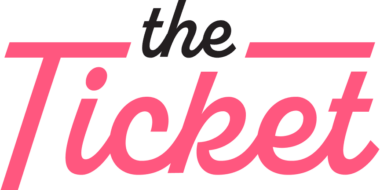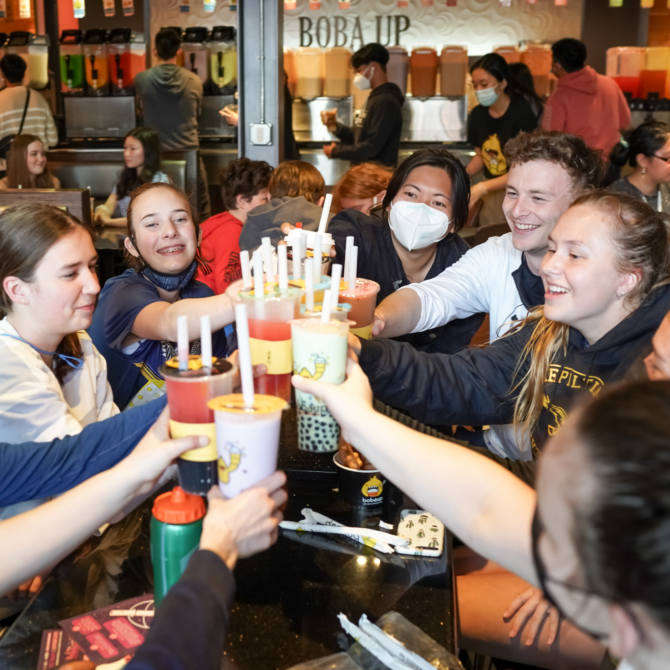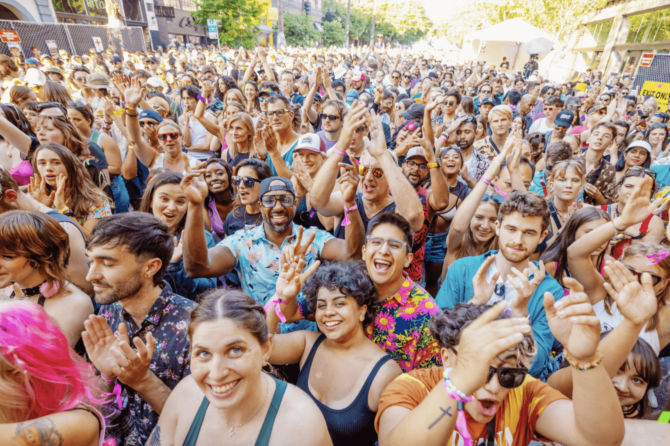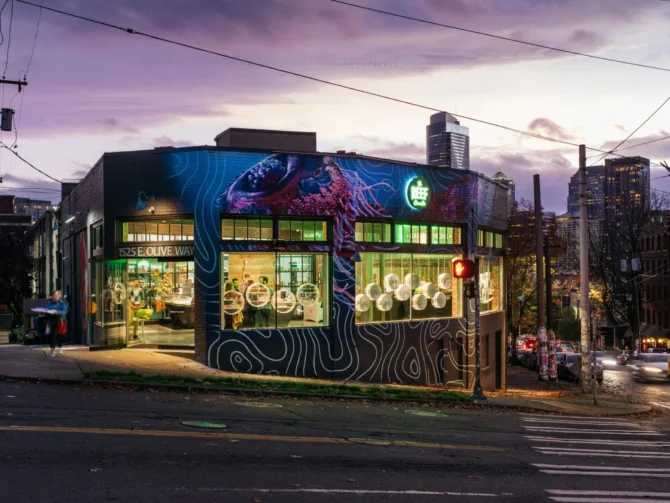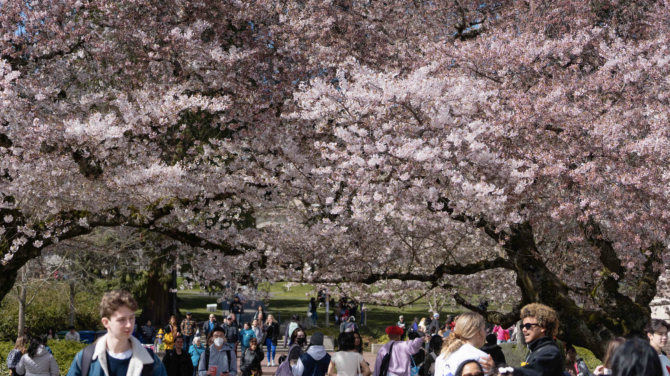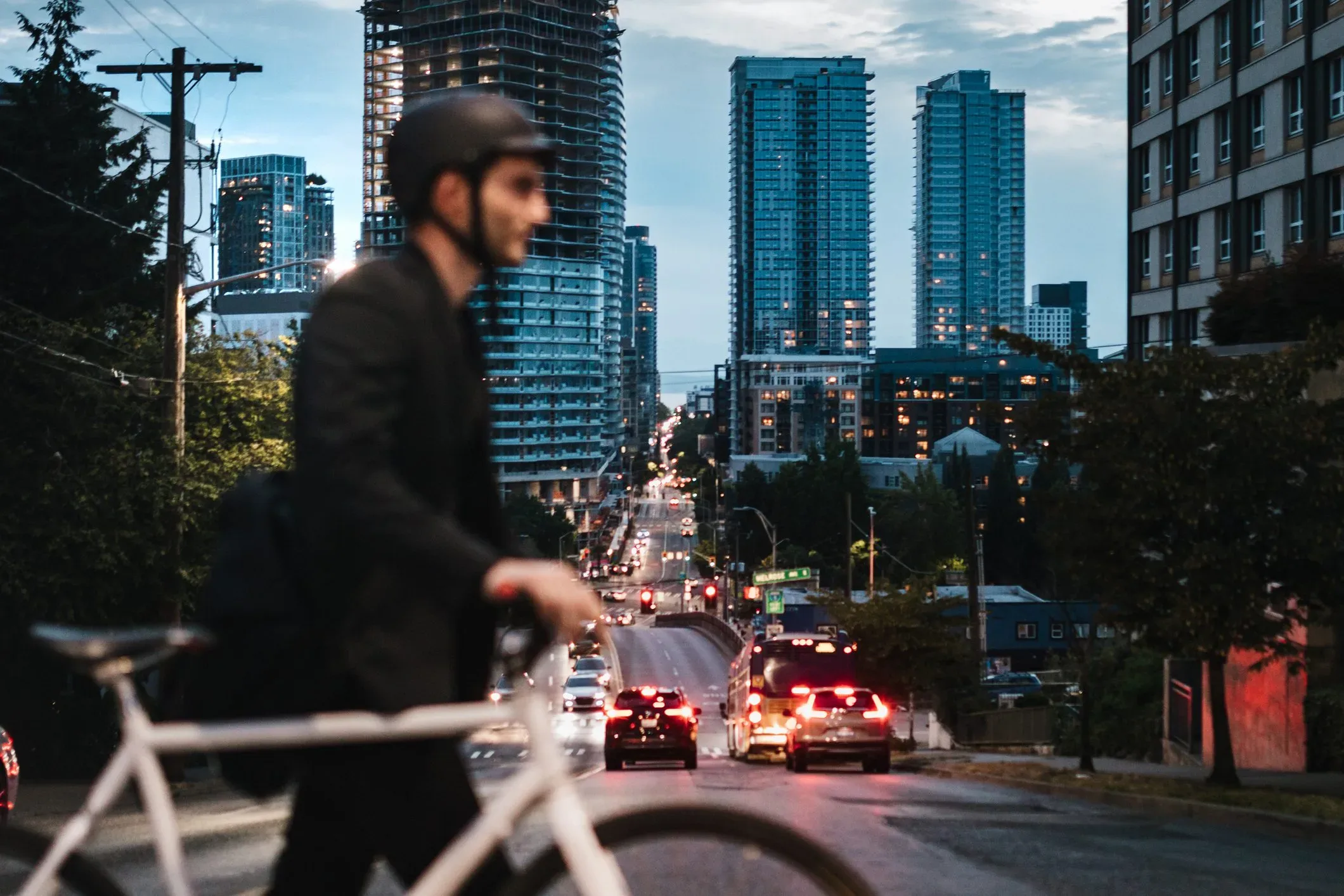
Sometimes on the right summer day, one that’s unusually clear or bright, a flurry of neon-clad cyclists will shoot by you on Lake Washington Boulevard. Later, you might see them again, with their sweaty spandex glued to their skin, knocking back beers at a nearby outdoor brewery. And then you might think what many Seattleites have thought: “Damn, I should get a bike.” Followed by: “But… the hills.”
Here’s the thing: The thigh misery is worth it.
With each ride, those cyclists—whether they’re commuting or just out for a joyride—chip away at roadway transportation pollution, which contributes an estimated 40% of Seattle’s carbon emissions. Plus, studies show cyclists are the happiest commuters because they can guarantee their arrival times more reliably than other modes of transportation. They also get a physical and psychological boost from the sensory stimulus and the exercise, and they make cool cycling friends.
Sure, it’s no surprise you haven’t become Seattle’s Next Top Cyclist, considering the city’s dark winter abyss, its collection of insane inclines, and the perpetually-promised-yet-not-quite-finished Seattle bike network. The good news is it’s not as hard as it seems to get biking in Seattle. It just takes a little effort.
I called up Paul Tolmé, a media manager for Cascade Bicycle Club, and he broke down some of the Seattle biking basics to get you in the bike seat.
Where to get a bike
📸: Courtesy Recycled Cycles
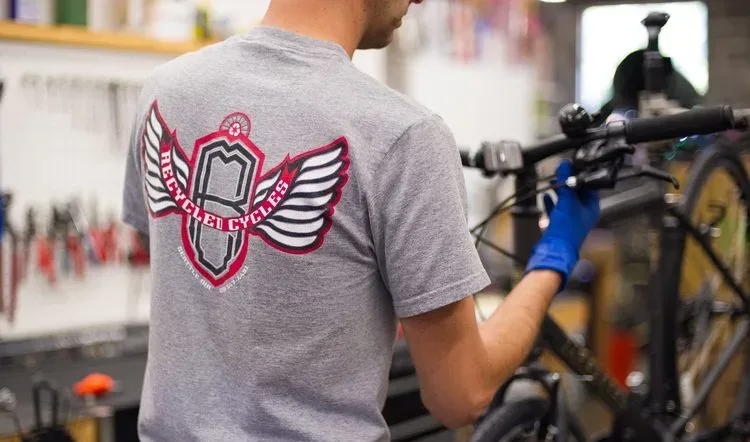
“Do not go buy an expensive road bike with real skinny tires,” Tolmé said. “If you’re new to biking and you’re using it to get around and not trying to race and be fast, you’re looking for a utilitarian bike. Frankly, a used bike from Recycled Cycles in the University District is a great way to get into bicycling without spending a lot of money. The benefit of a used bike is you pay less and you don’t have to be as concerned with locking it up and dinging it.”
The criteria a beginner should look for in their first bike are flat bars—“you don’t have to get those dropped racing bars”—and the “widest tires you can fit on your bike” since wide tires will “help you get over cracks and railroad tracks,” Tolmé said.
Montlake Cycles also has everything a beginner cyclist could need. Really, though, most Seattle neighborhoods have a bike shop worth their salt.
Tolmé said families looking for cargo bikes to cart their kids around and run their errands should check out G&O Family Cyclery in Fremont.
A few more:
📍Westside Bicycle (West Seattle)
📍Rat City Bikes (White Center)
📍20/20 Cycle (Central District)
📍Bikeworks (Columbia City)
What gear do you need?
📸: S Lindenau
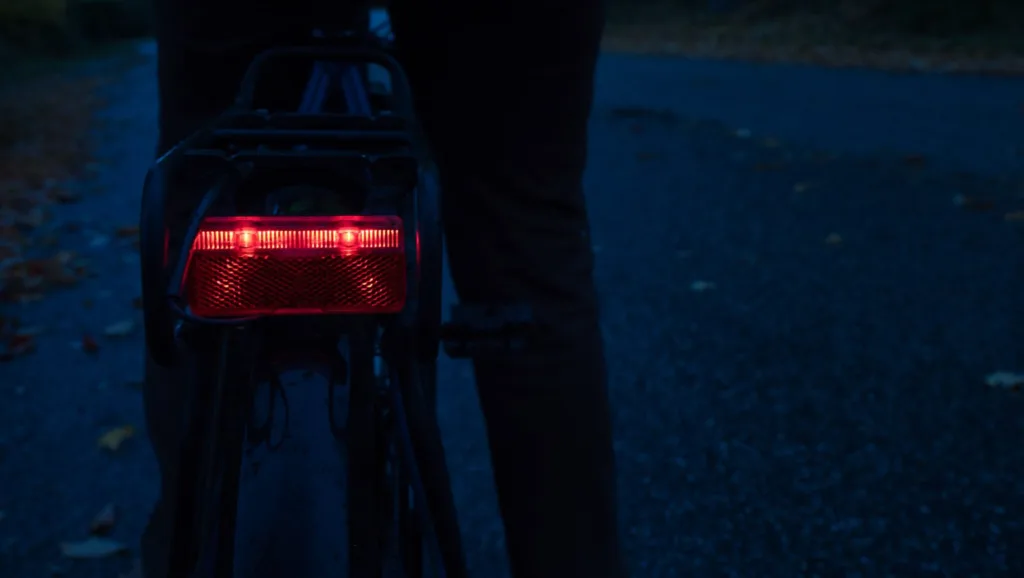
Make sure your bike has fenders. For some reason, not all bikes come with these rain and mud tire shields. In Seattle, you’re going to want some.
Grab a bike lock. Maybe two. A u-lock is basically a steel loop you can use to shackle your bike to a rack or a pole or whatever you can find. These are great, but they’re inflexible. Sometimes you might want a long, winding chain lock. Tolmé uses one of each for his bike.
A lot of gear helps with bike safety. For instance, lights on your bike are a must.
“I keep my lights on at all times,” Tolmé said. “Red light in the rear, bright light in the front.” Keeping lights on in the daytime increases the likelihood a car will see you.
Next, deck yourself out in the hautest high-visibility clothes.
“It’s not a fashion statement,” Tolmé said. “In the winter, when it’s drizzly and gray, I’ve got one of those bright yellow hi-vis jackets I wear. Forget your ego, and wear something bright.”
Speaking of clothes, you’ll want a good rain jacket and rain pants for all-weather cycling. Tolmé likes Portland-based Showers Pass for biking apparel. You can find that gear in just about any bike store.
How to be street safe
📸: Ryan J Lane
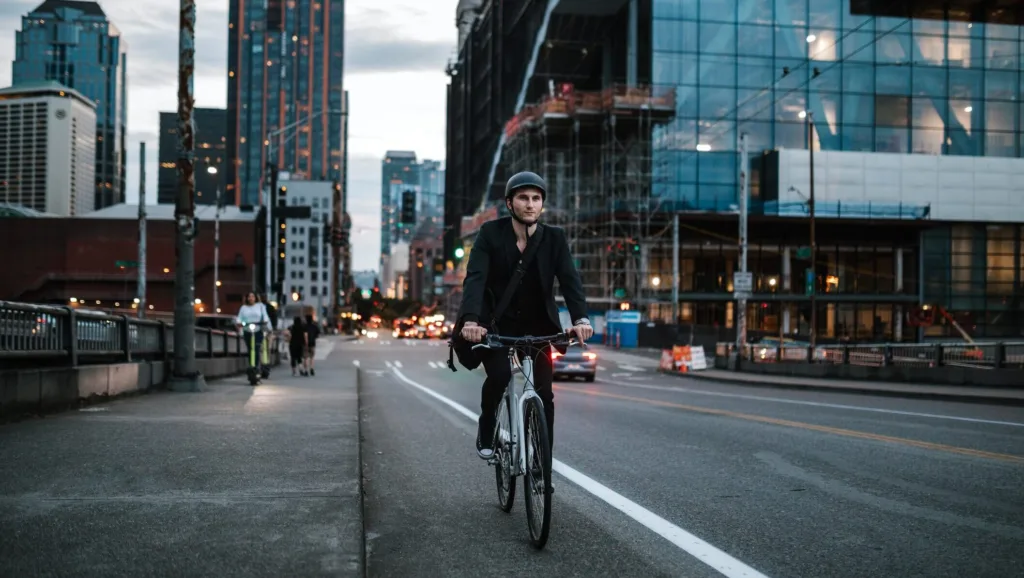
Tolmé really only mountain biked before he moved to Seattle. Adjusting to biking on city streets meant adopting a more defensive riding mindset. Mostly, he has to be “very car aware.”
Cascade Bicycle Club hosts urban biking safety courses which cover many of the basics of dealing with narrow streets filled with cars. They teach hand signals for bikers and how to stay at least three feet away from parked cars to avoid the “door zone” (aka the risk of a randomly opened door sending you flying off your bike). Cascade also hosts courses on beginning biking, bike maintenance, and ebiking. In addition, the non-profit hosts weekly group rides to familiarize yourself with the biking community and local routes.
Biking up that hill
📸: J MW Scout
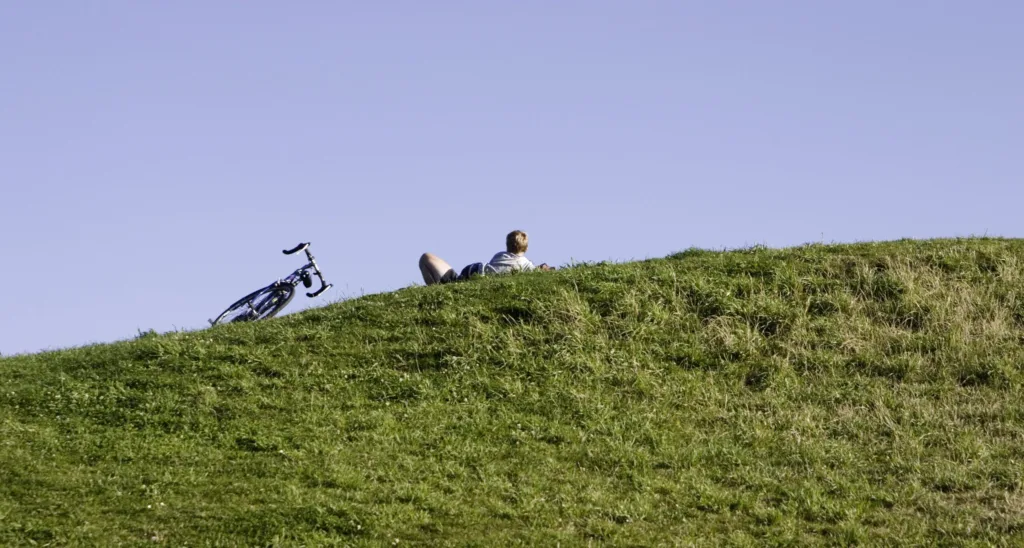
If you’re serious about biking in Seattle, you’re going to come face to face with some serious grades. The only way up is through. Grit your teeth and push. There’s no shame in getting off and walking. One day, you’ll have quads of steel. Maybe future lovers will want to bite them. I dunno. In the meantime, you’ll at least have some pain and lots of sweeping, glorious vistas.
You can also find which buses run on your hillier routes and plan to load your bike onto the bus. If you’re afraid of learning how to use a brand-new-to-you mechanism right when your bus pulls up, potentially derailing an entire commute and maybe ruining your bus driver’s spotless on-time record, you might want to practice. King County Metro has practice bike loading racks at six places in the city. Most of these places are free to use with posted instructions next to the rack. Some of them have phone numbers of who to call if you need step-by-step in-person guidance. That sounds like a nice job to have.
I won’t die on this hill because I have an ebike 🥁
— Jean M. Walsh (@jwalshie) June 23, 2022
Really, though, the only actual way to beat hills in Seattle is to get an ebike.
Ebikes? In this economy?
📸: Karol Gajewski
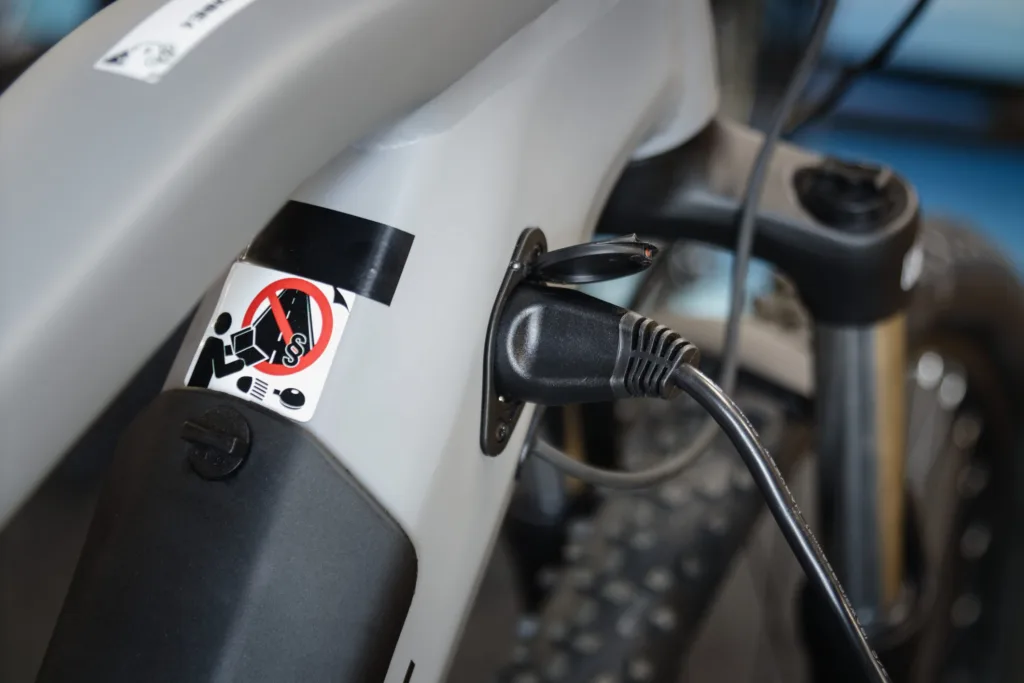
Yes! Ebikes are a great way to get around. However, casual bikers shouldn’t purchase them (casual bikers should find a bikeshare bike). Ebikes can run thousands of dollars. To find the right one, Tolmé suggests going to your neighborhood bike store and test driving every model you can.
“They seem expensive compared to regular bikes, but if they help you avoid driving your car for most of your errands, it’s a wise investment,” Tolmé said. “Even the most difficult bike ride is so much better than being stuck in traffic.”
Pro tip: If you’re going to ditch your car for a bike, invest in some saddle bags or panniers so you can store more on your bike.
Let’s ride
📸: 400tmax
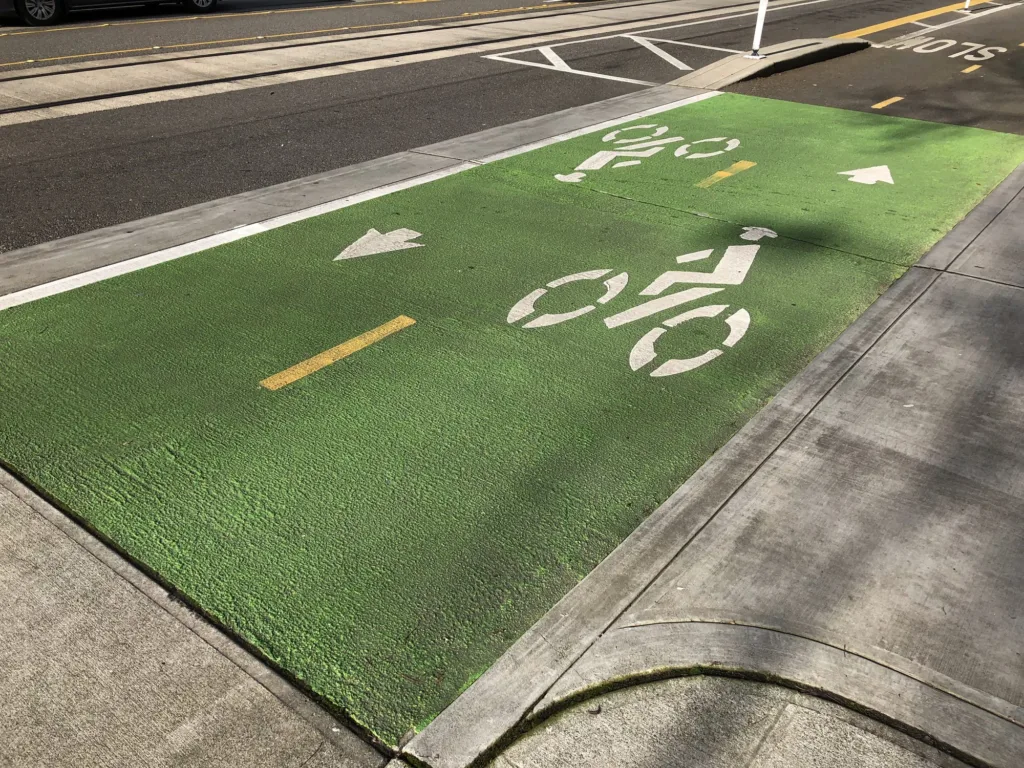
If you’re trying to bike somewhere specific in the city, look at the Seattle Department of Transportation bike map for guidance on where to go and what routes to take.
If you’re looking for a leisurely ride where you won’t run into many cars, one that’ll make you really fall in love with biking, Tolmé has some suggestions.
“I urge people to get to the Burke-Gilman trail,” Tolmé said. “Once you’re on the Burke-Gilman you can travel long distances. If you started in Golden Gardens you could ride all the way to Bothell, then hop on the Sammamish River Trail which connects to the Eastlake Sammamish Trail and you can do a ride of 60 miles in one direction all on trails. The Burke is the bike highway for people who want to ride bikes in Seattle.”
Tolmé also likes the 520 trail to Medina and beyond and Alki Trail along the west and eastern shores of West Seattle. He and his wife always stop at Rooftop Brewing in Fremont when they ride the Ship Canal Trail through Queen Anne toward Interbay.
“I’m a data guy, and the science and the data show people who ride their bikes regularly are healthier and happier,” Tolmé said. “Just go to Copenhagen.”
Build a biking community
Let’s try this.
— Brent Toderian (@BrentToderian) June 29, 2022
The answer is “less driving.”
What’s the question?
“Riding a bike is a great way to make friends and build a sense of community,” Tolmé said.
It’s easy to find cycling friends if you know where to look. Weekly group rides at Cascade Bicycle Club are a good place to start. Moxie Monday also hosts weekly rides for women, femmes, and non-binary people. The Bikery hosts semi-regular social rides and bike maintenance nights. You can also find out the answer to any question you’ve ever had about biking and keep up with local bike-centric news over at the Seattle Bike Blog.
